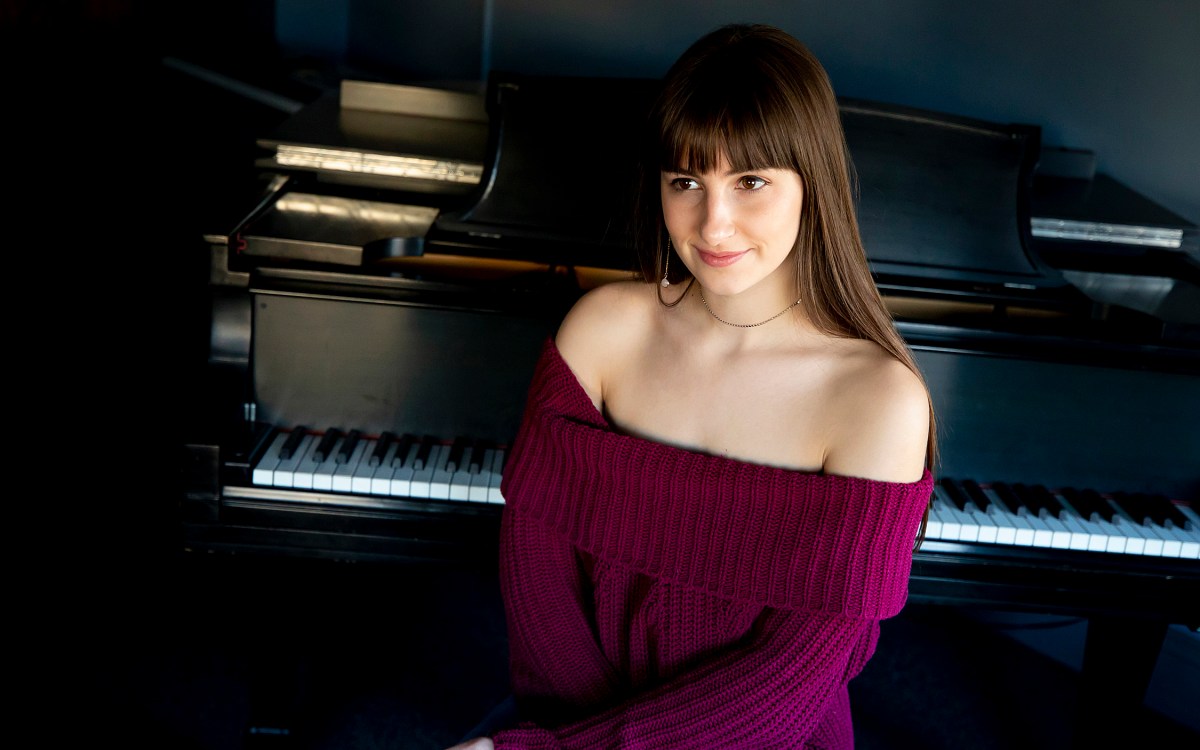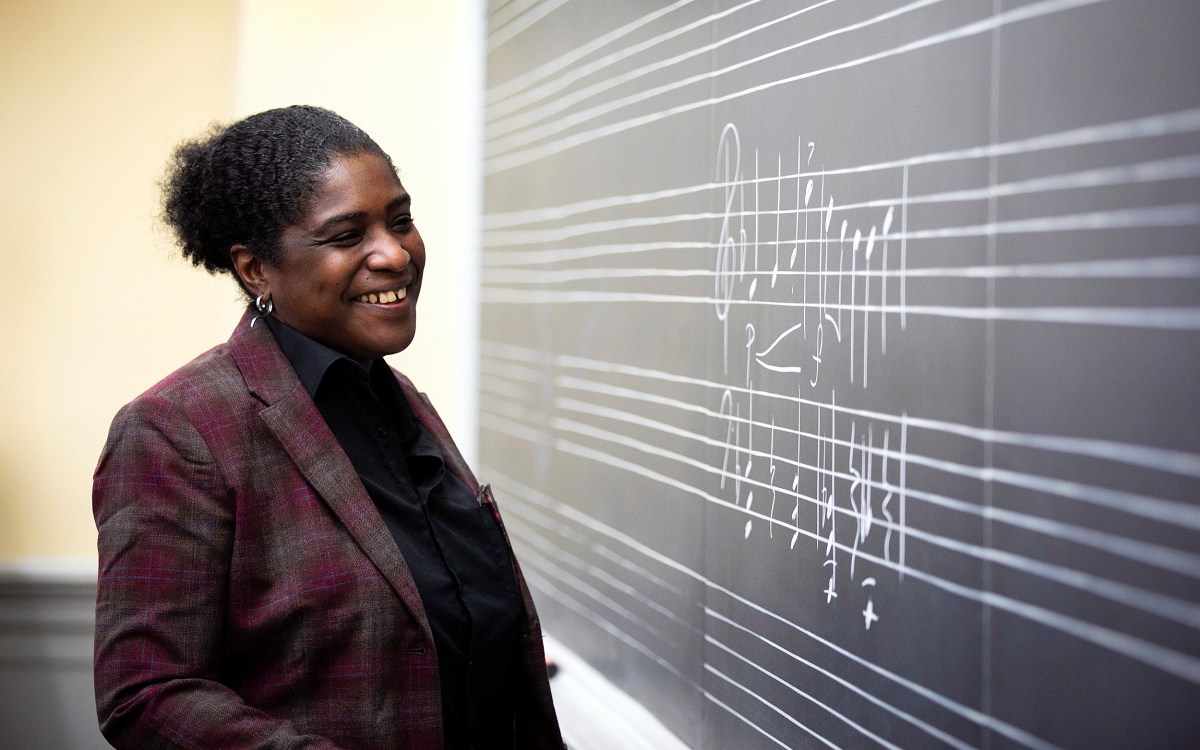They will THUD you
Videos by Sophie Park
The Harvard Undergraduate Drummers make captivating beats using buckets, brooms, spoons, and tubes
They’ve got the beat. The Harvard Undergraduate Drummers, known appropriately by their acronym THUD, are a student-run percussion group that makes rhythmic music with tubes, trash cans, buckets, cups, brooms, basketballs, spoons — you name it. If it makes a sound, they can probably play it (or have at the very least tried). And much of it goes viral.
Best known for their popular YouTube videos where they use Boomwhackers, colorful plastic tubes each tuned to a single note, to bang out renditions of famous songs, THUD makes what they do look smooth, flawless, even simple.
It’s not. The work is highly technical, difficult, and involves (literal) buckets of coordination.
In the past few years, THUD’s YouTube channel has grown from 2,000 subscribers to about 340,000, and their Boomwhacker versions of Journey’s “Don’t Stop Believin,’” Queen’s “Bohemian Rhapsody,” and “Africa” by Toto have been seen from 3 million to more than 5 million times. Finnish DJ Darude declared their take on his 1999 trance mega-hit “Sandstorm” his favorite cover of the song. In fact, he requested they perform it for him when he was in Boston in November for a show. The group also routinely fields emails from teachers and students across the country who see the videos — like one of their most recent, Lil Nas X’s 2019 smash, “Old Town Road” — and want to start their own Boomwhacker group.
Not even the novel coronavirus pandemic has stopped them. Practice wasn’t as frequent after they left campus but the music never stopped. THUD still worked on arranging Boomwhacker pieces and even stitched together a video of members playing “Blinding Lights” by The Weeknd. The group has also used the time to edit the videos they’d already filmed and post them on YouTube. They recently put up Boomwhacker renditions of “Eye of the Tiger,” “Take on Me,” and “Havana” by Camilla Cabello.
Going viral isn’t easy. Getting just the right arrangement for these videos involves days of work leading up to practicing the piece. The group has to break down the song to sheet music, study what notes and sounds are most important, and determine how it will work with their instruments. They then assign the appropriate Boomwhacker tubes to each group member.
“I remember when I was arranging ‘Africa,’ I spent the day in my room doing this whole process,” said THUD co-director Dody Eid ’20. (Luckily, one of the current members, who’s a bit of a coding whiz, recently came up with an algorithm that has streamlined the process.)
Still, when it comes to getting the sound from the sheets to the ears for the videos and live performances, it’s all about hours of old-school practice, communication, and timing.
In normal semesters THUD practices in the Lowell Lecture Hall from 9 p.m. to midnight every Monday. It’s clear when they’re there because the place has a certain boom as they rehearse sets for the two campus shows they stage each semester. Their spring shows were canceled due to the closure of campus.
The group writes original pieces for these shows, designates a theme, and even creates a plot based on well-known movies or TV shows (see: “2001: A Space THUDyssey,” “The THUDlorette,” or “The THUDfather”). Each year, the shows become increasingly more elaborate in an effort to offer audiences not only a performance but an experience. “Basically, the THUD show is a musical where the musical numbers are percussion pieces,” Eid said.
THUD attracts an eclectic group. Some members are percussionists. Some play the guitar or banjo. Other plays the cello, flute, or don’t play anything at all.
Yasmin Luthra ’21, THUD’s other co-director, calls this one of THUD’s strengths. “We all unite in this love for music and percussion,” she said. “We’re able to build off each other to get a final product.”
Members like Aaron Hodges ’21, who joined the group his first year, agree. A oboist by training, Hodges wanted to branch out with instruments, compose his own music, and connect with others who shared that passion. THUD, which allows any of its members to write pieces, has allowed him to do just that. Two years ago, for instance, he wrote a piece called “Trash” that took the entire ensemble to perform and featured a choreographed fight using the trash can lids as shields and drumsticks as swords. He remembers how fun it was to practice.
At a rehearsal in the fall, though they weren’t sword fighting, the group kept that fun going using broomsticks and basketballs to make a beat. At another, Ian Kimbell ’23, one of the group’s newest members, showed another THUD member how to play the spoons.
Along with the live shows, THUD performs a number of gigs throughout the year at local venues and sometimes ones further away — even digitally. In June, for instance, THUD will perform at the online International Music Education Summit via live stream.
The group’s most meaningful work, however, comes in the form of community service and music education. THUD has performed and taught percussion workshops in schools across New England, worked with Cambridge students in an afterschool music program, and, in 2018, visited a child with muscular dystrophy in New York, who’d seen their videos on YouTube and even had his own set of Boomwhackers. During the pandemic, the group has shared their arrangements with a number of music teachers as they work to keep their music curriculums going remotely.
“It’s been a great chance to just spread awareness about what music can become to these young kids and be an inspiration, which is kind of humbling,” Eid said.








